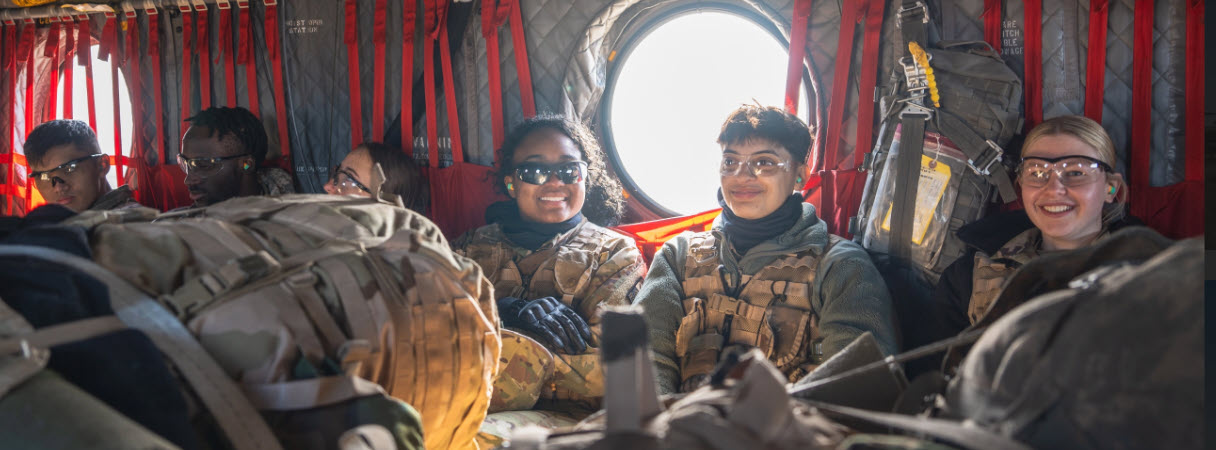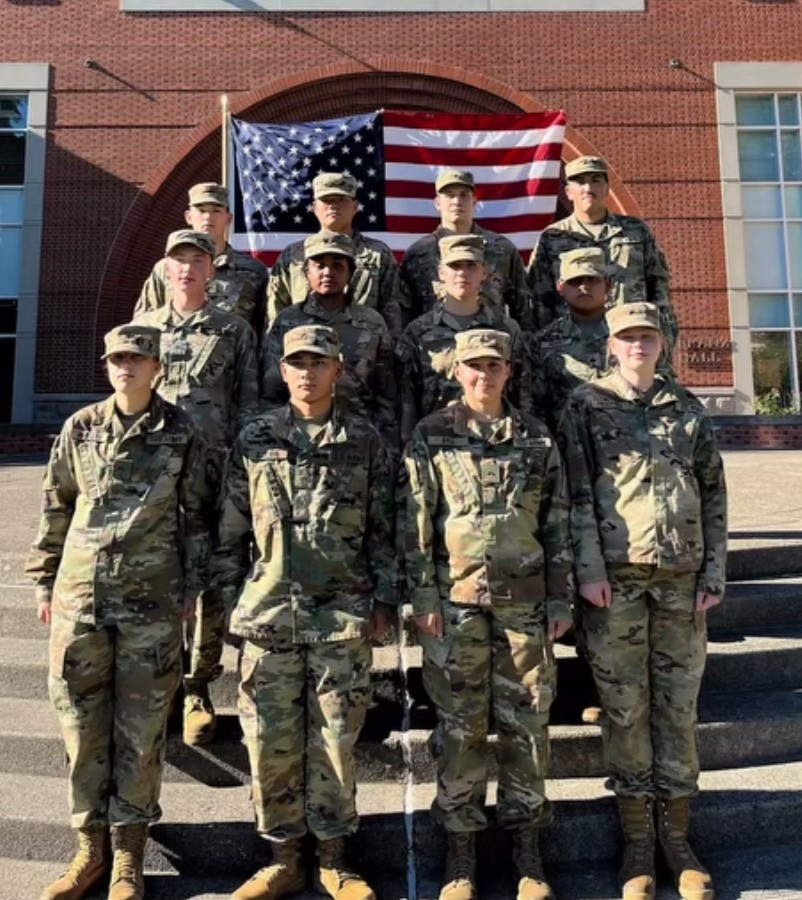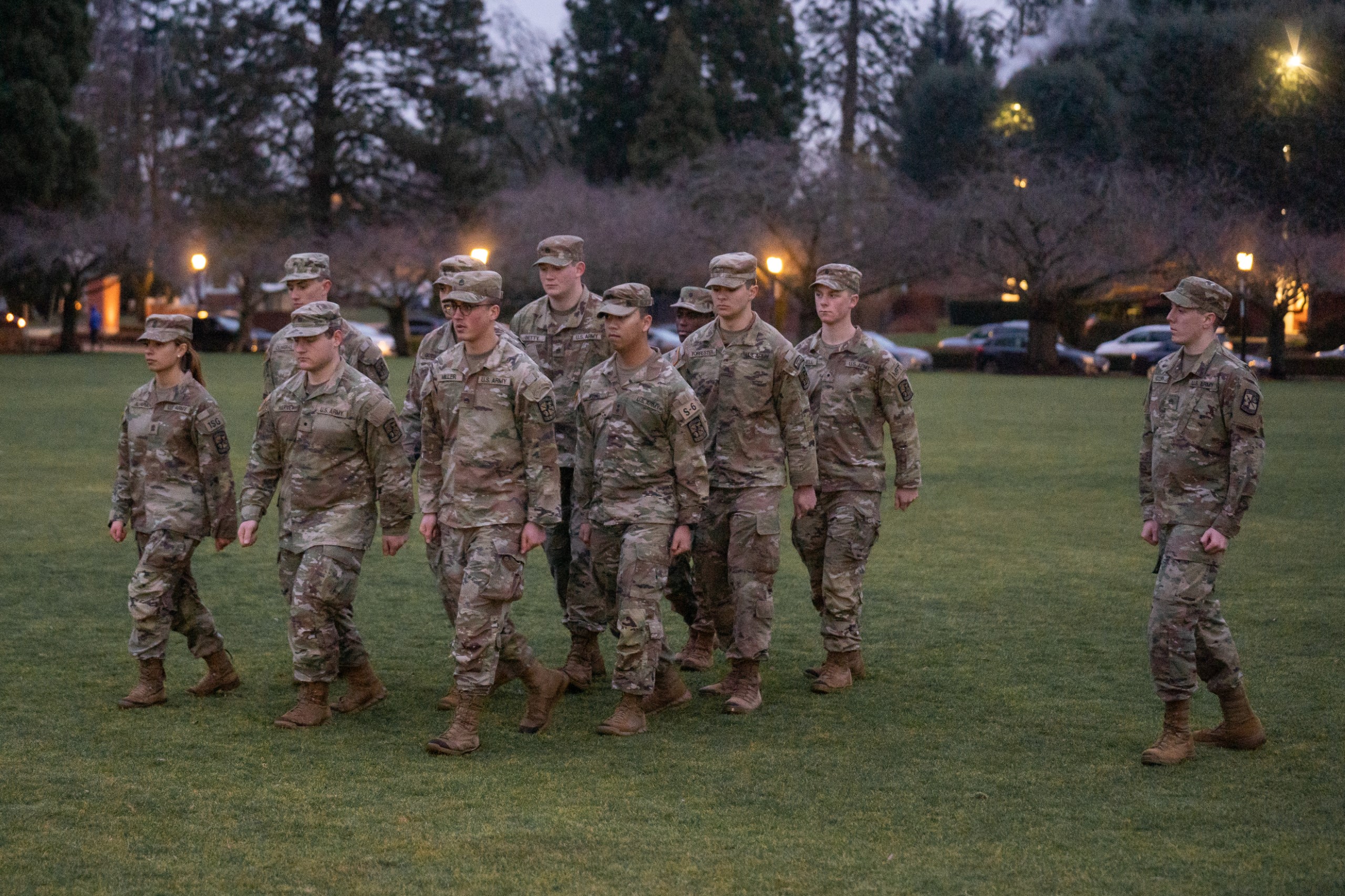
The typical week for an Army Cadet includes physical training, academic instruction, and hands-on field experience.
Every Monday, Wednesday, and Friday, cadets meet at 0630 to conduct Army Physical Training in order to develop, enhance, and challenge each cadet's physical abilities. This development of physical endurance is a crucial part of the cadet's future Army career. Cadet’s train to develop holistic fitness to enable success on the Army Combat Fitness Test and other challenging events.
Cadets attend classes like their fellow students, but their schedule includes an augmented exclusive course on leadership offered by the military science department and the 300-level American Military History to satisfy their ROTC course requirements. Cadets attend the following courses:
Overviews leadership fundamentals such as giving direction, problem solving, listening, presenting briefs, providing feedback, and using effective writing skills. Students begin to explore leadership dimensions and values in a 60-minute class and a 2.5-hour leadership lab every week.

Examines the challenges of leading in complex contemporary operational environments. Dimensions of the cross-cultural challenges of leadership in a constantly changing world and their application to leadership tasks and situations is covered. Case studies and importance of teamwork and tactics in real world settings are explored.

Study of intense situational leadership challenges to build student awareness and skills in leading small units. Skills in decision-making and motivating team members when "under fire" are explored, evaluated, and developed.

Explores the dynamics of leading in the complex situations of current military operations. Students examine differences in customs and courtesies, military law, principles of war, and rules of engagement in the face of international terrorism. Aspects of interacting with non-governmental organizations, civilians on the battlefield, and host nation support are examined and evaluated.

University of Portland
5000 N. Willamette Blvd.,
Portland, Oregon 97203-5798
503.943.8000
This website uses cookies to track information for analytics purposes. You can view the full University of Portland privacy policy for more information.
